- Madagascar Through the Lens of Jay Collier
-

Canon Photographer Jay Collier has been working as a wildlife photography guide in Africa since 2004. Jay has amassed an immense amount of knowledge on every aspect of wildlife photography and explored the continent extensively. But he says it’s the ‘Great Red Island’ of Madagascar that stands out as being the most unique, with its abundance of rare and beautifully bizarre wildlife.
Here in this insightful travel guide, Jay shares his favourite photography locations in Madagascar, along with advice on the best camera gear and settings to use on your quest to master the art of wildlife photography.
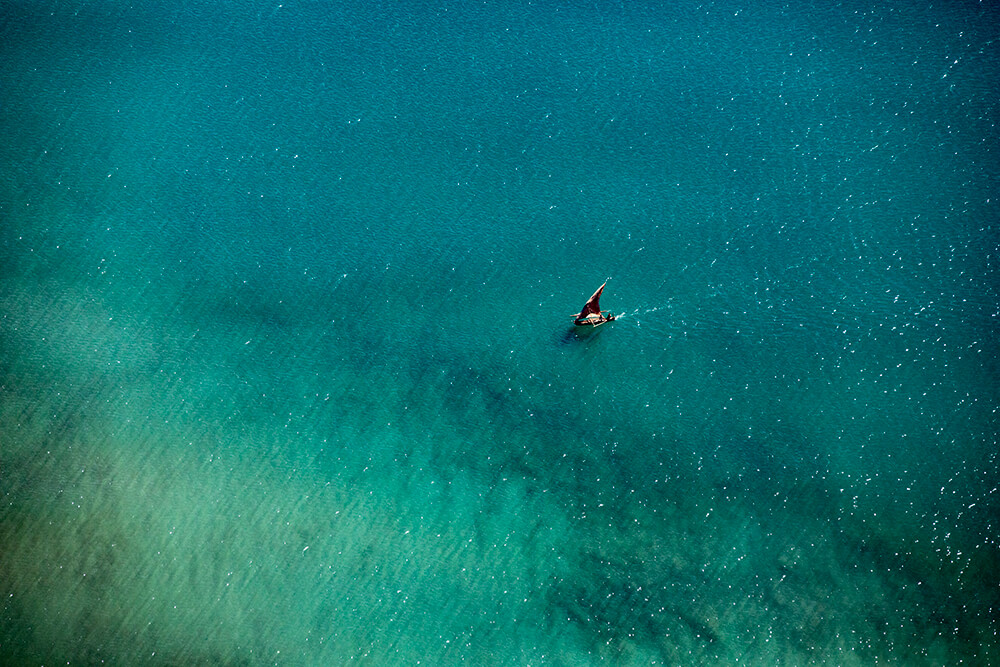
“Madagascar is completely different to mainland Africa in every way possible.”
Jay Collier
The Flora & Fauna
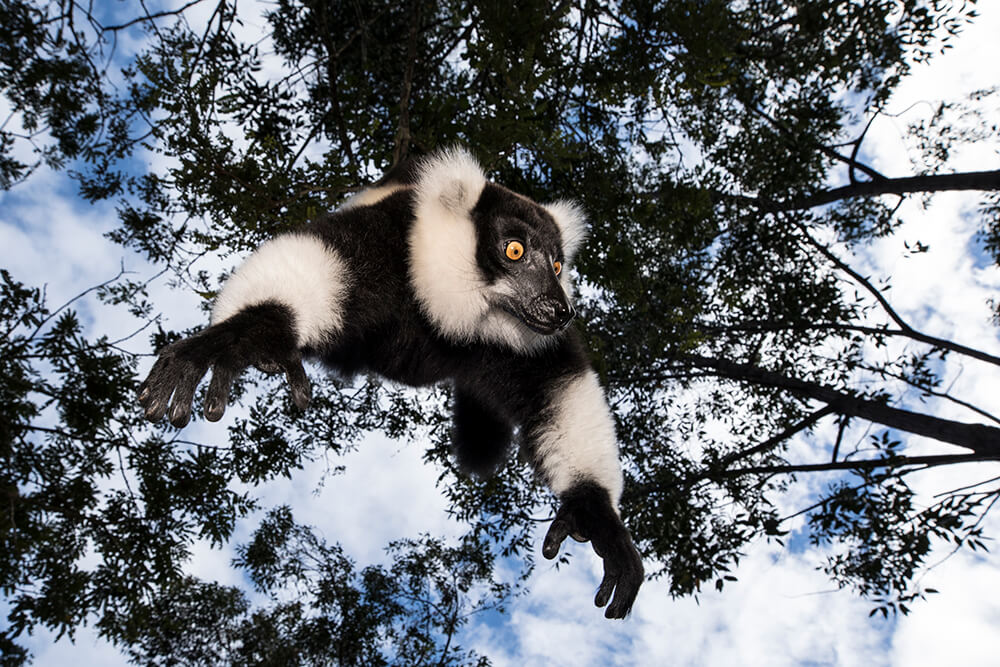
The major drawcard of Madagascar is its wildlife. With some 100,000 species of fauna, the sheer volume of photographic opportunities is mind boggling. Over 100 species of lemur, 300+ species of birds, 260 types of reptiles and 266 amphibian species call this island home. And there’s still more being discovered today—more than 600 new species of wildlife have been recorded since 1999.
“Unlike many other wildlife locations, it’s not always about needing the longest lens, as the wildlife here is relatively relaxed. There are very few predators here, meaning the wildlife literally comes to you.”
Jay Collier
Just about everything you lay your eyes on in Madagascar exists nowhere else on Earth. In fact, approximately 9% of its reptiles, 89% of its plant life, and 92% of its mammals are completely unique to the island. It’s this sheer volume of biodiversity that provides us photographers with so many opportunities to create images of the wild, strange and rare.
The Culture
But it’s more than just the wildlife that makes Madagascar so special. The ‘Rainbow Island’, as it’s also known, is home to a wealth of cultural diversity and some of the friendliest people you’ll ever meet. From the capital of Antananarivo to the rural seaside fishing villages of Morondava, there are endless opportunities to take portraits and capture the locals’ unique way of life.
“You will be glued to your window with camera in hand everywhere you go in Madagascar.”
Jay Collier
The Landscapes
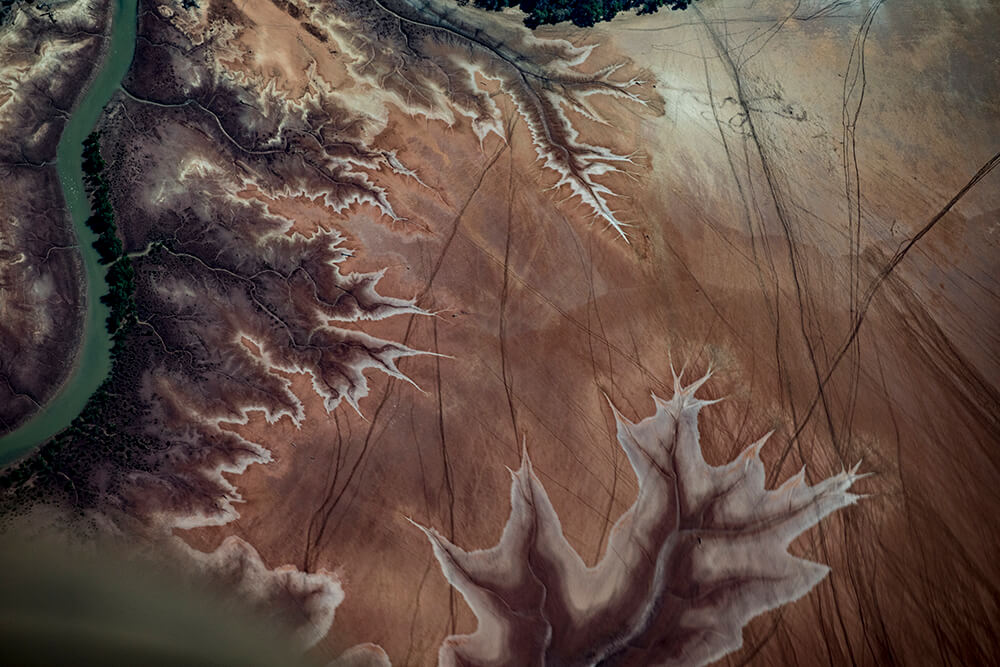
This dynamic island nation is home to some 15,000 varieties of flora, with diverse landscapes that are forever changing from top to bottom and from coast to coast. Madagascar offers a bounty of stunning locations unlike anywhere else, with temperate monsoon forests to epic mountain ranges and pristine beaches that easily top the world’s more famous island destinations.
• Morondava
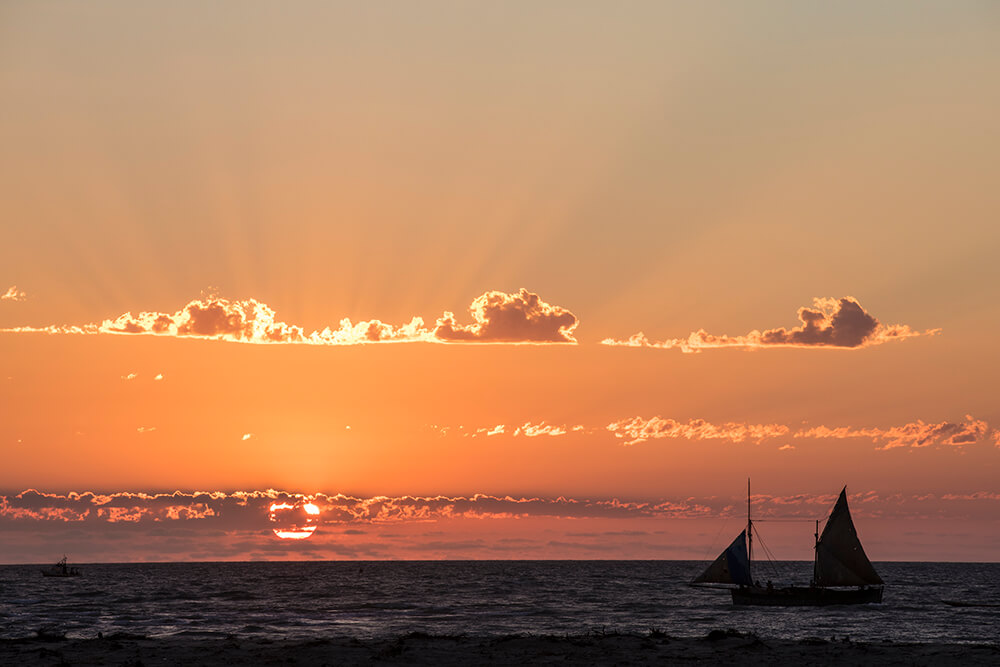
With its thriving fishing and rice growing industries, Morondava offers a true insight into Madagascar’s coastal life. Not only does it offer stunning coastal scenery and a bustling town center, but it also provides easy access to a traditional fishing village, located just a short stroll down the main street. Be sure to tag along with a guide as it will help you get more involved in the action. Don’t be shy—strike up conversations with locals and you’ll be surprised where you can go with your camera.
When to shoot it: Visit at low tide and you can practically walk across or pay a local to take you across in their canoes. The opportunity to photograph people and street photography here is endless.
• Baobab Alley
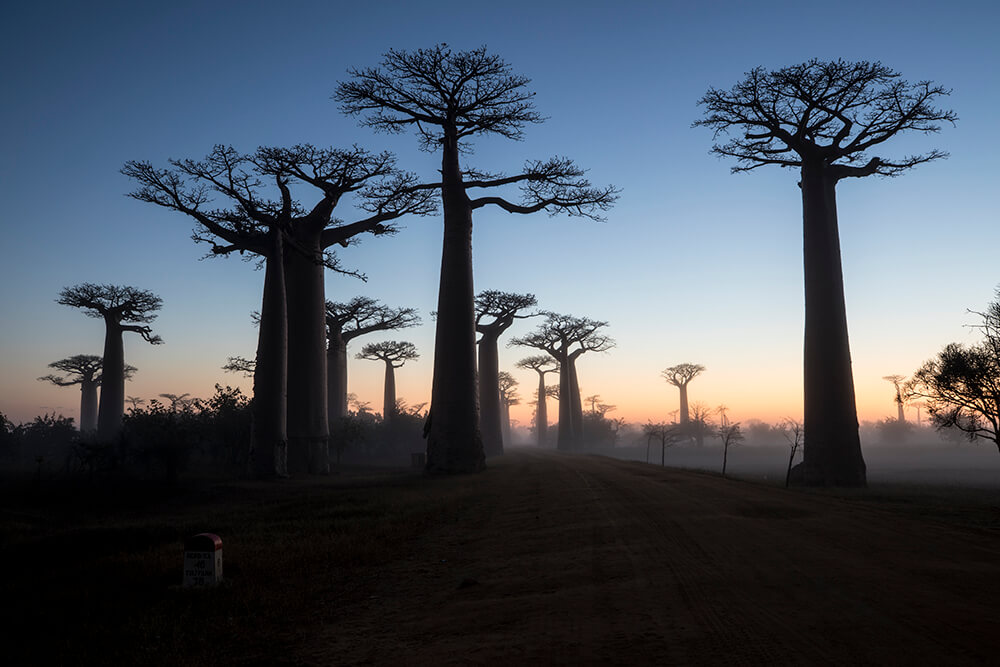
Just a few hours’ drive from Morondava is the famed Baobab Alley, a long road lined with bizarre baobab trees that runs through a little village. Although it’s become something of a tourist hotspot, it has retained an air of authenticity and always makes for beautiful photographs. Just note that the locals will likely ask you for money for taking their picture.
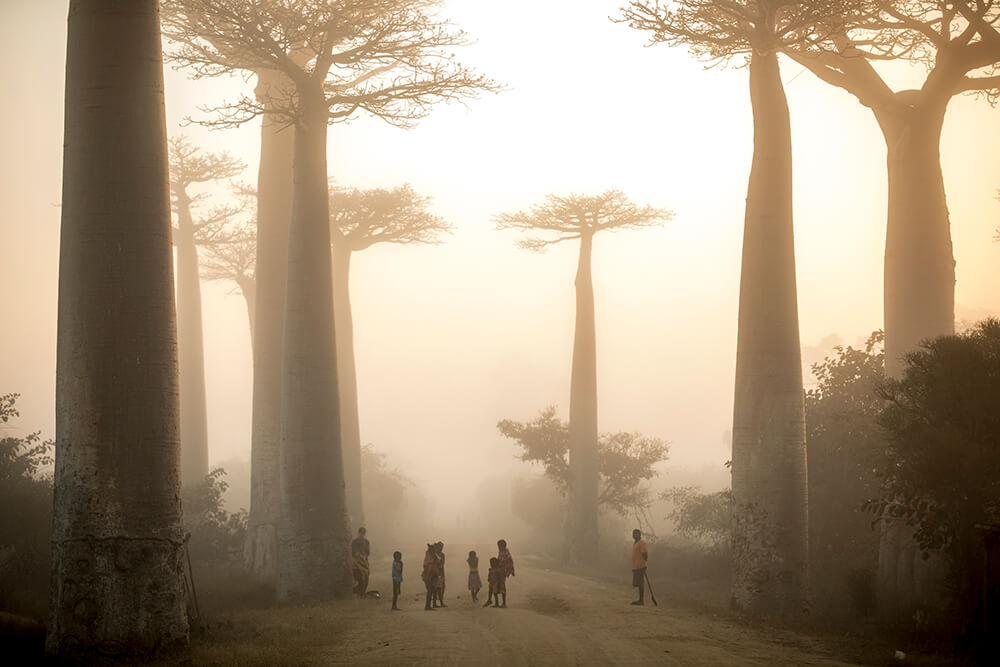
When to shoot it: Arrive early before sunrise and if you are lucky you will be greeted by morning fog, allowing you to photograph the trees and locals as they appear through the mist. You often meet men riding on zebu carts on the way to market each morning, which also make for great pictures. You can have your guide pay a local zebu cart owner to run a few laps for you too, which ensures you can set up the shot.
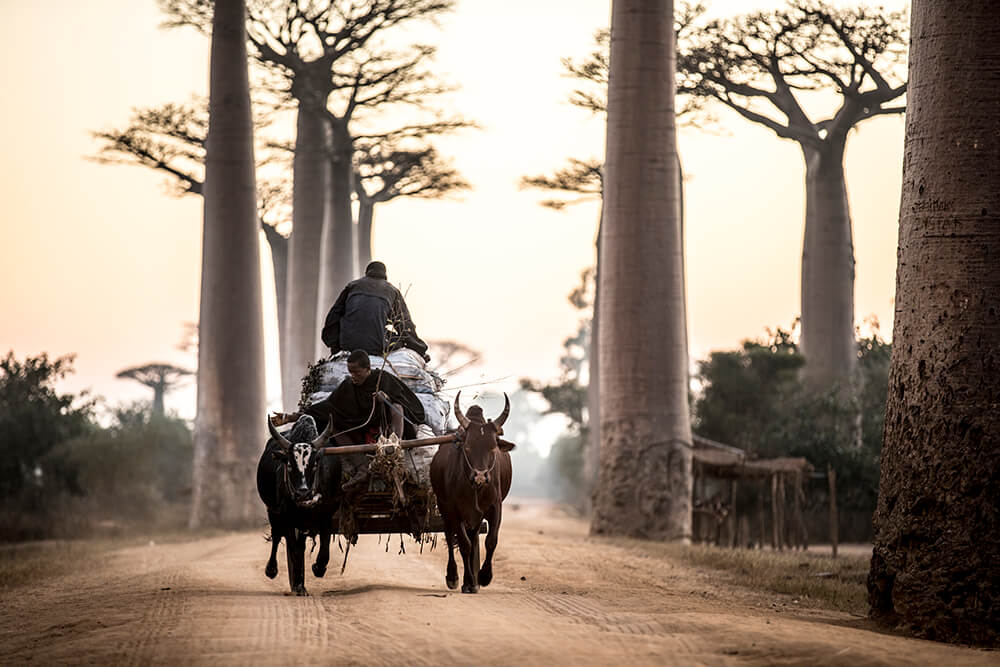
Afternoons here are also great, with beautiful sunsets. You are best walking out into the field to the right-hand side (if facing down the road away from Morondava end) and taking your shots looking back into the sun to capture the silhouettes of the trees and locals.
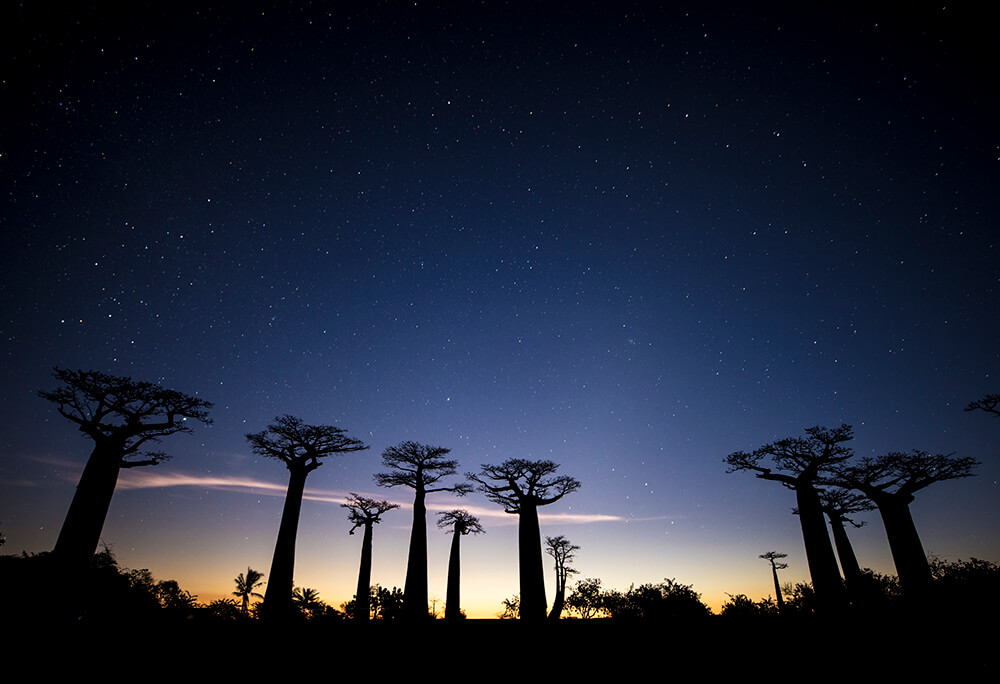
If your guide can arrange it, try to stay after sunset from the opposite side to the left of the road to shoot the stars against the trees.
• Andasibe, Vakona Forest
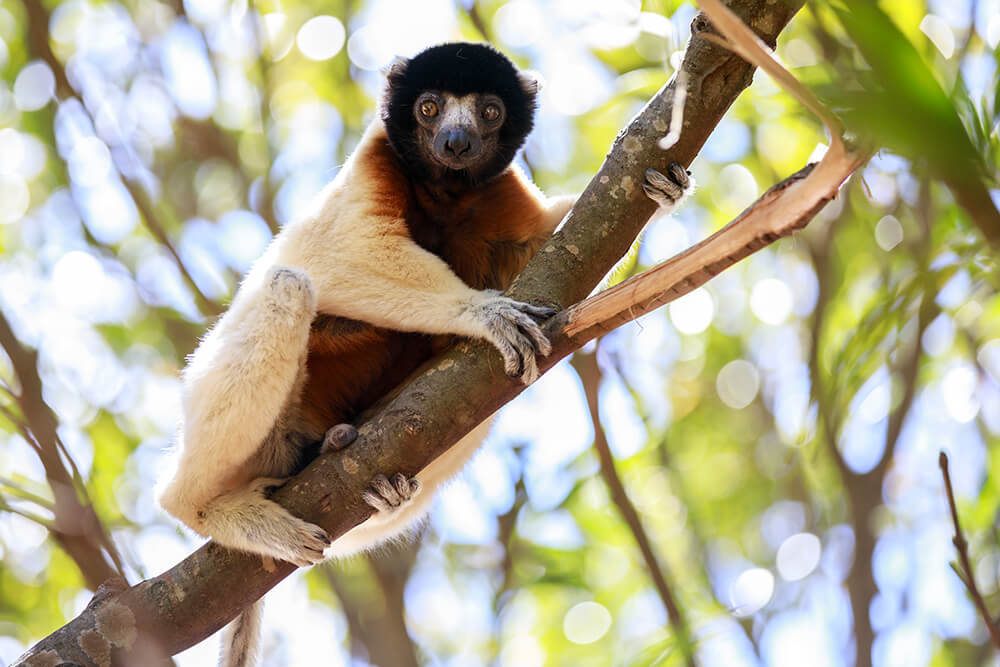
Vakona Forest is one of the top locations in Madagascar for photographing lemurs, including the largest Indri Indri species. Here you can get extremely close to the animals. They have no fear of humans as they have few natural predators. Also, it has always been taboo in local culture to hunt or eat lemur due to their close evolutionary relationship with humans, so there’s something of an unspoken bond.
Tip: This can be a very hot and humid location so be sure to pack light and drink plenty of water. Apart from the trek to find wildlife, you will also have a wide variety of insects, reptiles and plants to photograph around your lodge. Be sure to pack your macro lens and some flash gear here as it can get very dark.
Camera
I use two Canon EOS 5D Mark IV cameras, one equipped with the Canon EF 70-200mm f2.8L IS USM III lens and the other with the EF 24-70mm f2.8 L II. I’ve found this combination covers pretty much everything I need. I also use an EF100mm f2.8L Macro IS USM lens along with the speedlite and Canon ST-E3 off camera flash controller for macro photography.
Lenses
You don’t need very long lenses for wildlife photography in Madagascar. Here, speed is more important than focal length. I’ve found that a EF 70-200mm f2.8L IS USM III is extremely useful when used with a 1.4x and 2x teleconverter, as more often than not you can get extremely close to the animals without them running away. Having a decent f1.8 or f2.8 lens is also important as it gets very dark in the forest.
Monopod
I tend to avoid tripods as they are difficult to use when you’re in thick jungle. Monopods are lighter and much easier to work with, so I always keep one in my bag.
Camera Vest
You won’t win any prizes for fashion, but a good camera vest saves you having to dive in and out of your bag all the time and frees you up while having everything quickly accessible.
Other Essentials Items to Pack
• Spare batteries
• Plenty of memory cards and two card readers
• External hard drive
• Light reflector
• A comfortable, weather-proof camera bag
• Lens cleaning wipes and brushes
• Light weight, quick drying clothes
• Long pants and long sleeves
• Insect repellent
• Headlamp for light walks
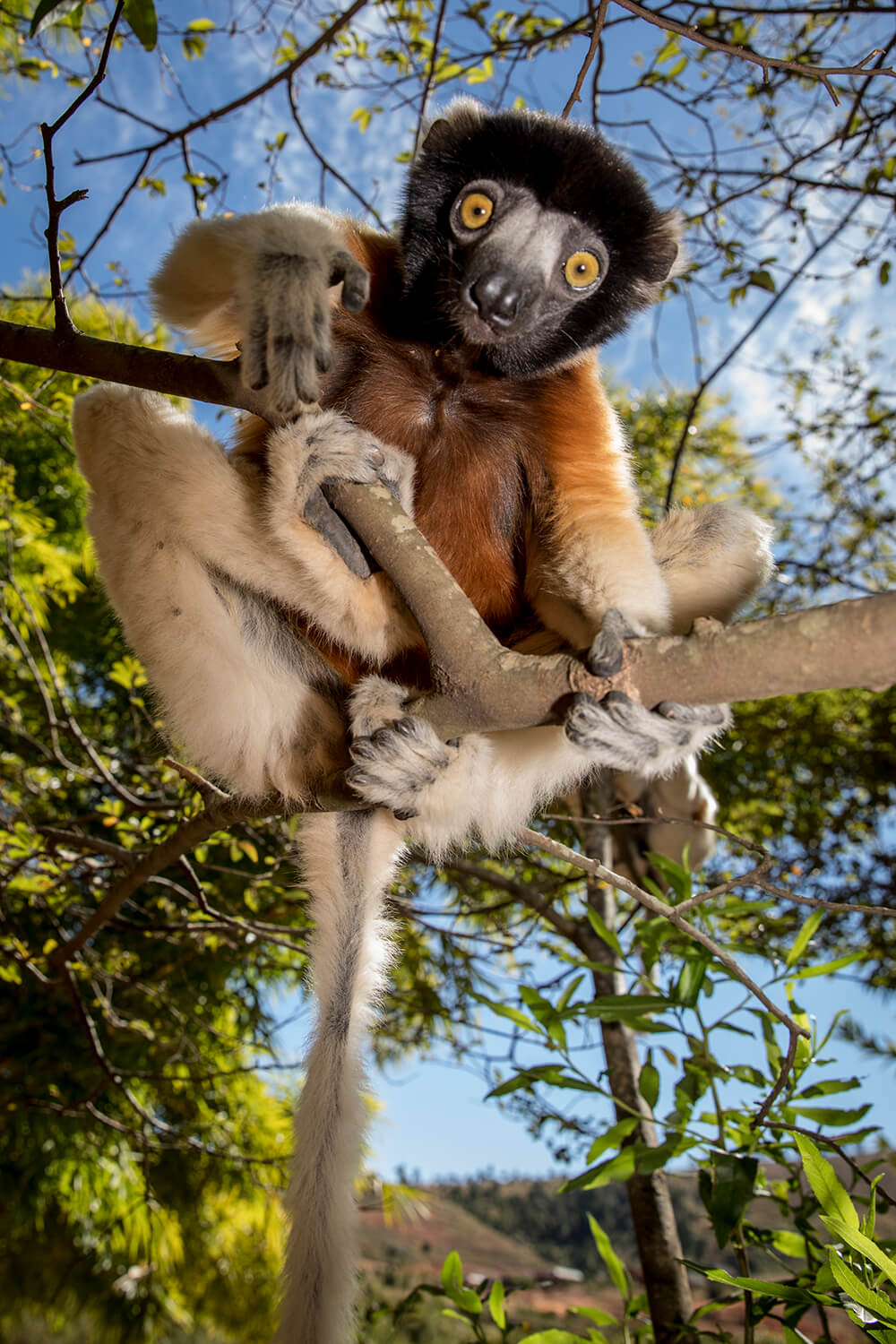
Capturing Fast Moving Subjects
When photographing most mammals, you should think about the light they are in and the backgrounds to assess your options for exposure. Consider whether your subject is static or moving and decide what shutter speed will be required. If static, try not to shoot under 1/125" to avoid camera shake.
For example, when photographing lemurs they can be very quick so it’s best to keep your shutter speed a bit higher. A shutter speed from 1/640” to 1/2500” may be required, depending how fast they are moving. Try to vary your shutter speed to suit, as you move from static shots to moving shots.
A handy way to photograph wildlife is to use manual exposure but with auto ISO. The light is constantly changing so this allows you to set the shutter speed you require and the aperture required for depth of field and allow the camera to select the ISO for a balanced exposure.
Adjust Your Depth of Field
Depending on how many subjects you have in your frame, you will need to adjust your aperture. An aperture of f2.8 will provide a shallower depth of field and work well for a single subject, while an aperture of f7 or f11, for example, will be better for shooting multiple subjects.
Shooting in Low Light Conditions
Having a flash and a good understanding of how to use it is a must as it can get very dark. You may also need a flash when shooting against a backlit sky, where you can use it to fill in your subject. When using a flash you can shoot between 1/60” to 1/250” using the flash to light and freeze your subject.
You can shoot at night in manual exposure at 1/125", f5.6 and 400 ISO. Raise the ISO and/or flash power if the subject is far away. Note that you will need an external flash, as built in flashes do not have enough power.
Getting Up Close
When shooting macro photography, you can shoot in manual exposure at 100 ISO and set your aperture between f11 to f22. Then select a shutter speed until you get a totally black image or until your subject just disappears. Use a flash in ETTL to then light your subject for perfect results. If you don’t have an off-camera flash, use a sheet of paper over the top of your camera’s built-in flash to bounce the light back down onto your subject.
Best Time of Year
Unlike Australia, Madagascar is warm all year round and does not have seasons apart from a wet or dry season. The summer season is hot and rainy and runs between November and April. Winter is cooler and dryer, running from May to October.
The weather also varies immensely regardless of what time of year it is. And, much like Japan, in Madagascar you can experience totally different weather conditions in the same day depending where you are on the island.
Best Time of Day
Madagascar offers photographers the chance to photograph many different species at all times of the day and night. It’s worth remembering however that some species can only be seen during the day or night. Typically you’ll find something to photograph at any time—your main challenge is having just 24 hours in a day to shoot. You quickly learn how many shooting hours you can squeeze in between sleeping.
Follow Jay Collier on Instagram to see more of his photos from Madagascar and beyond.

Wondering which are the best Canon lenses for you? We reached out to our community to ask which is their go-to lens, and what it is that keeps them going back for more.

Sean Scott is one of Australia’s leading travel photographers, but how did he get started and what’s in his kit? Find out here.

Elaine shares her favourite photography locations in Helsinki and Lapland. From snow-white fields to ethereal pine forests, Finland sure has a lot to offer.